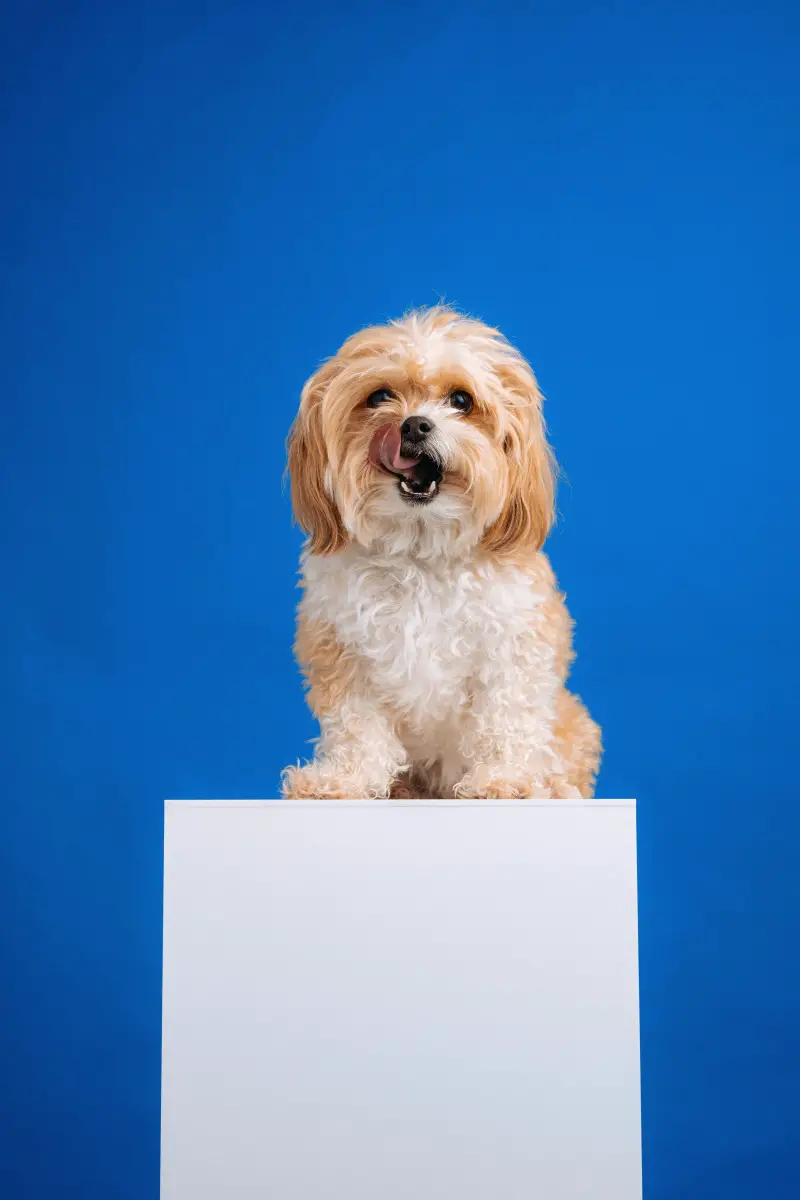Pint-sized, full of personality, and brimming with charm, small dogs have always been a favorite among pet lovers. In a spectrum that varies from the diminutive Chihuahua to the robust French Bulldog, small dog breeds cater to every pet owner’s preferences on size, looks, behavior, and lifestyle compatibility.
Unfolding this treasure map as we traverse the progressive stages, let us dive into understanding the factors that contribute to deeming one breed as the ‘#1 small dog breed’. Identifying these factors is akin to drawing coordinates for our exploration. Each breed’s essential characteristics, health predispositions, and genetic traits play significant roles. Equally critical is the breed’s adaptability to various living situations, exercise needs, and their social tendencies.
Moreover, dog owners’ unique circumstances and preferences further add complexity to the plunge. Factors like living environment—do you reside in an urban apartment or a country house, your family situation—do you live alone, with a partner, or have young children, and your lifestyle— are you an outdoor enthusiast or prefer to nestle indoors, all play a prominent role coloring this exploration.
However, given this myriad of elements, one might wonder the possibility of finding a singular ‘#1 small dog breed’. Addressing this dilemma requires us to shift our lens and embrace the inherent diversity amongst these adorable small canine breeds. Instead of seeking one breed that excels in all areas, we need to identify a breed that delivers a well-rounded, balanced performance in a majority of situations.
Moreover, as we begin this quest, remembering that each breed is unique with its distinctive traits makes the journey more trails. Remember, every one of these petite canine breeds has something special to offer, and there’s no one-size-fits-all answer. We are not essentially looking for the ‘best’ breed but rather seeking to unveil that one breed that seamlessly fits into various situations, bringing joy, companionship, and dollops of love into our lives.
With this broad understanding of the challenges and rewards in our quest, let’s step forward into the enchanting world of small dog breeds, turning our eyes and hearts towards finding our ‘#1 small dog breed.’
Table of Contents
Understanding Small Dog Breeds
Before embarking on the journey of pet ownership, deep understanding of the plethora of petite canine breeds and their unique needs is a necessity. Be it the tiny pooch varieties or compact canine varieties, each breed exhibits a distinct personality and suite of needs.
The Unique Requirements and Adventures of Owning Small Dog Breeds
Owning a small dog breed, like any pet, comes with unique requirements and adventures. From providing suitable living arrangements to considering breeds suited for active environments, owners must plan and prepare to create the most fitting environment for their canine companions. Even looking at the small pedigree breeds, the differences in their temperaments, energy levels and adaptability to surroundings are beyond noticeable.

Photo by Steph Wilson on Unsplash
Apartment Living and Exercise Needs
Most small-sized dog breeds adapt well to apartment living given their size, but they are definitely not one-size fits-all. Certain breeds may require more exercise and mental stimulation compared to others, and even the seemingly tiny dog species may surprise you with their spirited personalities and boundless energy. Pairing the dog’s needs with the owner’s lifestyle is key here, as it ensures a happy companion and thus a happier household.
Breeds Suited for Active Environments
While a small dog breed might thrive in an apartment setting, some miniature pet dogs better suit active homes with yards to run and explore. Some breeds may be more sedentary and prefer a quiet environment over constantly changing surroundings. For dog lovers with active lifestyles–those who enjoy long walks, hikes or trips to the dog park–certain mini dog breeds would be the perfect fit.
Importance of Matching Temperament for a Harmonious Household
Just as important as size and exercise needs, temperament should be a top factor in choosing from a whole host of little dog species. Just as people have different personalities, dogs do too. Some may be aloof, others more social; some may be stubborn, and others eager to please. Matching the temperament of petite puppy types to the personality of the household can lead to harmonious living and a loving bond that lasts a lifetime.
Spotlight on Distinctive, Popular Small Dog Breeds
With countless distinctive and popular types of small puppy breeds out there, understanding what makes each breed unique helps in choosing the one for you.
Traits and Origins of Affenpinscher, Alaskan Klee Kai, and American Eskimo Dog
The Affenpinscher, with its mischievous demeanor and face resembling a monkey, is a sturdy, bold and affectionate breed. Venture further north and meet the Alaskan Klee Kai, a small-sized puppy variety that exudes energy, intelligence, and can certainly surprise with its athleticism for its size. And then we have the fluffy, white American Eskimo dog that stands out for its striking appearance and astute sensitivity to owner’s emotions.
Characteristics of American Hairless Terrier, Australian Terrier, and Basenji
The American Hairless Terrier, a lively and playful breed, captures attention with its uniquely bald coat. The sturdy and spirited Australian Terrier was bred to work and likes to stay active, while the Basenji, one of the more ancient breeds, is often noted for its intriguing cat-like behaviors and its ‘barkless’ nature that doesn’t mean it’s actually silent!
Touch on the Unique Identities of Each Breed
No two breeds, be it small or large, share an identical identity. Each diminutive dog type carries a unique blend of attributes, influenced by its lineage, function and historic origins. Appreciating these differences and understanding the characteristics of each breed is paramount when selecting the right dog.
Choosing the Right Breed: Factors to Consider
Choosing from the myriad of small canine breeds can be a challenge. There are several key factors to consider when trying to find the perfect match between you and your future furry friend.
The Role of the Dog’s Energy Level and Temperament in Selection
Knowing a breed’s typical energy level and temperament can help you understand if it’s the right fit. For instance, a calm and patient dog breed might be ideal for an individual looking for a relaxed companion. Similarly, a lively and active breed may be better suited for families with children.
Consideration of Household Environment
The household environment also plays a significant role in breed selection. The presence of other pets, young children, or elderly relatives in the house, can influence the suitability of a breed. Size of the dwelling, availability of outdoor space, and time spent at home are other factors that need to be taken into account.
Attention to Specific Grooming and Health Requirements
Last but not least, the breed’s grooming needs and inherent health concerns should be considered. Certain breeds might require more grooming than others while some dog breeds might be predisposed to certain health issues. These aspects, in addition to their lifespan, can affect your time and financial commitments.
Features of Small Dog Breeds Suited for Various Lifestyles
In the same way every homeowner has individual habits and preferences, every small dog breed, from tiny pooch varieties to miniature pet dogs, presents its own endearing qualities, making them better suited to some lifestyles than others.
Why Small can be Big: Benefits of Small Dog Ownership
Despite what their stature might insinuate, small dog breeds often come with big benefits. Owners of these tiny dog species often find their ease of care, their endearing personalities, and their surprising adaptability a perfect fit for their distinct living conditions.
Ease of Care for Limited Space Inhabitants and Individuals with Mobility Restrictions
For those living in apartments or places with limited space, small-dog breeds are often a perfect fit. These compact canine varieties are convenient to carry around, need relatively lesser space to frolic and are easier to restrain, making them a wonderful pet choice for the aged or individuals with mobility restrictions. Providing adequate exercise and physical stimulation for these diminutive dog types is often manageable within the limits of a small garden or even indoor spaces.
Discussion of Personalities of the Chihuahua, Jack Russell Terriers, and Pomeranians
While small in size, breeds like the Chihuahua, Jack Russell Terrier, and Pomeranian have big personalities that offer an abundance of love and companionship. The Chihuahua, as the smallest recognized breed, is known for its fierce loyalty and sharp intelligence, despite its featherweight size. The Jack Russell Terrier, though part of the mini dog breeds category, is full of energy, courage, and is a prolific digger. The Pomeranian, a picture-perfect fluffy companion, is an extrovert with a bright and amiable character. Understanding the appeal of these small dogs goes beyond their size, and undoubtedly their dynamic personalities play a pivotal part.
Understanding the Appeal of Small Dogs Despite Their Diminutive Size
Undeniably, there’s a remarkable appeal to small dog breeds that goes beyond their easy maintenance and unique personality traits. The unmistakable ‘cute’ factor, their seemingly constant puppy-like features, all contribute to the appreciation of these petite puppy types. The charm of these dogs is undeniably irresistible, and their size often amplifies their endearing behaviors, gifting us an adorable companion that fits right into our laps!
Noteworthy Small Dog Breeds
Notable small breeds each carry a charm of their own. Understanding their unique attributes, traits, and temperament can help you decide which one could be your perfect fit.
Presentation of Hypoallergenic Breeds: Yorkshire Terrier and Yorkipoo
A noteworthy mention on our small dog tour is the hypoallergenic breed. The Yorkshire Terrier, a feisty and intelligent breed, falls under this category along with its adorable hybrid counterpart, the \Yorkipoo; both these breeds are best known for their hypoallergenic coats. This distinctive feature makes them a popular choice among pet lovers prone to allergies, and those who prefer a dog with a low-shedding coat.

Photo by Shiebi AL on Unsplash
Examining the Companionship Qualities of the Maltese and Shih Tzu
The Maltese and Shih Tzu are two breeds well-known for their outstanding companionship. These small-sized dog breeds are famously good-natured, family-friendly and enjoy spending time in their owners’ laps. Renowned as loyal companion dogs, they thrive on human interaction, making them ideal pets for individuals or families that can dedicate a lot of time for their canine companion.
A Look at Unique Breeds Equal Parts Captivating and Manageable, the Alaskan Klee Kai
The Alaskan Klee Kai is a fascinating blend of attributes that seems to have struck the right balance between captivating and manageable. This small-sized breed has the captivating appeal of huskies and similar captivating looks but comes in a smaller package. This tiny dog species has a playful and energetic temperament, coupled with impressive intelligence, making it adaptable to various lifestyles.
Practical Roles & Abilities of Small Dog Breeds
Although small dogs may be most well-known for their charm and companion virtues, over the years, these miniature dog breeds have proved their weight in gold in many practical roles and abilities. They possess surprising competencies beyond merely being adorable companions.
How the Pembroke Welsh Corgi Serves as a Vigilant Watchdog
A ceslebrated example is the Pembroke Welsh Corgi, a small-sized dog breed that serves as a vigilant watchdog. Despite their little stature, Corgis have proven themselves as alert guards of the house, always on the lookout for any unfamiliar activity. Their keen senses coupled with their inherently protective nature make them excellent watchdogs.
The Surprising Agility of the Whippet
Contrary to common belief, some small breeds exhibit significant agility despite their size. A striking example is the Whippet, which, though considered a small breed, is known for its remarkable speed and agility. Whippets are excellent racing dogs and respond well to agility training, making them great participants in fast-paced dog sports.
Exploration of Diverse Roles Small Dogs Can Fulfill Beyond Companionship
From working as therapy dogs to participating in sports and competitions, small dog breeds demonstrate a variety of practical roles. By their sheer versatility and the array of roles they can fill, these breeds prove that when it comes to dogs, small can indeed be big, and that their diminutive size doesn’t limit their potential in any way.
Revealing the #1 Small Dog Breed
Having navigated the fascinating world of small dog breeds, from petite canine breeds to compact canine varieties, it’s time to unravel the big question. On what criteria can we crown the ‘#1 small dog breed’, and who does this coveted title belong to?
Criteria for Determining the #1 Small Dog Breed
Choosing the ‘#1 small dog breed’ doesn’t simply involve picking the most popular breed or the one that’s currently trending. It involves understanding a host of factors contributing to a breed’s high ranking and acknowledging the essential role of personal elements in this selection process.
Factors that Contribute to a Breed’s High Ranking
Determining factors for a high ranking of a breed are as diverse as the breeds themselves. From temperament to health and longevity, from ability to adapt to various household environments to ease of training, from the need for exercise and mental stimulation to grooming requirements – each attribute plays a crucial role in evaluating miniature pet dogs. However, truly superior small pedigree breeds manage to balance these needs effectively, demonstrating a well-rounded, adaptable nature that caters to a variety of lifestyles.
Acknowledgement of the Personal Elements in Judging What Makes a #1
Determining the ‘#1 small dog breed’ cannot overlook personal choice and the unique circumstances of each dog owner. Every household or individual has unique needs and expectations when it comes to choosing a pet. Therefore, while one breed might be ideal for a certain lifestyle, it might not fit as well into another. The true ‘#1 small dog breed’ is the one which fits best with the owner’s lifestyle, routine, and personal preferences.
Emphasizing the Relevance of Personal Preferences and Lifestyle Compatibility
The importance of personal preference and lifestyle compatibility can’t be overstated when it comes to choosing the right pet. Each tiny dog species, small puppy type, and miniature dog breed carries its personality, disposition, and care needs. Finding harmony between these needs and the owner’s lifestyle is a pivotal determinant in choosing the ‘#1 small dog breed’.
Unveiling of the Most Popular Small Dog Breed
Having considered all relevant factors, now it’s time to reveal the most popular small dog breed. While there’s a plethora of deserving contenders in the race, one breed stands tall (quite an oxymoron for small dog breeds!) when it comes to balancing the multitude of factors we’ve discussed.
Presenting the Identified Top Dog Breed
So, the ‘#1 small dog breed’ is – the Shih Tzu! Closely contested by the likes of the Pomeranian and Dachshund, the Shih Tzu clinches the title with its distinguished character, manageable size, and adaptable nature that caters to both city dwellers and those with sprawling yards.
Highlight the Reasons Why This Breed Stands Out
So, why does the Shih Tzu stand out among other small puppy types? Aside from being an absolute delight to own, Shih Tzus possess a robust character that exhibits an impressive balance of devotion, alertness, and friendliness. Best known for their regal yet friendly demeanor packed in a compact package, the breed adds appeal with a coat that’s hypoallergenic and beautiful. Plus, this breed does not require strenuous exercise.
Discussion of the Breed’s Standout Characteristics, Care Requirements, Suitability across Lifestyles
The full set of attributes that set Shih Tzus apart involve their adaptability to various home environments, relative ease of training, and a propensity for a balanced lifestyle. Shih Tzus are relatively calm dogs that make wonderful companions. Their care requirements are also manageable. They’re famous for being great with kids and other pets, so they fit in with a wide range of lifestyles. All these factors combine to make the Shih Tzu a strong contender for the title of #1.
That said, let’s not forget that choosing your #1 dog breed is ultimately a personal choice. Each breed, whether it’s a Shih Tzu, Chihuahua, or tiny Pomeranian, brings something unique to the table that might be the perfect fit for you.
Bringing It All Together
Emerging from our in-depth journey through the irresistible universe of small dog breeds, we’ve gained a thorough understanding of the unique makeup of these furry companions. From the tiny pooch varieties to the small pedigree breeds, each comes with its distinct features, charm, and value. They’re easy to handle, adapt well to different living conditions, require less space, and are easier on the cost of maintenance and care than larger breeds.
The perks about small-sized dog breeds extend beyond physical dimensions. It’s also about the larger-than-life personalities that encompass this smaller size. Their compact size doesn’t compromise the unmeasurable amount of love, joy, and companionship they bring into our lives. It’s the little dog’s big heart that warms up homes and brightens lives, truly encapsulating the idea why small can indeed be big.
These adorable companions, from the tiny puppy types to miniature pet dogs, demand admiration for their versatility. They rule the roost whether it’s for falling under the hypoallergenic breed category, serving as vigilant watchdogs, demonstrating exceptional agility, or just being the ever-loving lapdog. Magically, they manage to fit into an array of lifestyles, households, and preferences, not just fitting in, but often proving to be the missing puzzle piece.
Upon unveiling the Shih Tzu as the top pick in our search for the ‘#1 small dog breed’, our analysis entirely turned on factors such as adaptability, care needs, and variety in compatibility with owner lifestyles. This not only underscores the all-encompassing allure of a breed that fits in various molds, but also the complexity of judging such a title.
Choosing the ‘#1 small dog breed’ is not as straightforward as it might seem. It isn’t about identifying the breed that is universally best, or currently popular. Rather it’s about understanding the individual needs, lifestyle, and preferences of potential pet owners and identifying a breed that would be best suited to provide a harmonious blend. Because ultimately, the ‘#1 breed’ varies from person to person, reflecting the unique circumstance and expectation of every dog lover.
The perfect pup is not judged by the latest breed rankings or general popularity charts, but by the unmistakable bond of companionship formed between dogs and their humans. Remember, the ‘#1 small dog breed’ is not a one-size-fits-all answer, but a breed that impeccably aligns with and compliments its owner’s lifestyle and preferences. Therefore, in this enchanting and varied world of petite canine breeds, the true ‘#1 small dog breed’ is inevitably the one that wins your heart!




